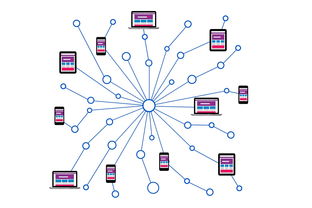Vietnam’s mobile communications sector has been experiencing remarkable growth in recent years. From the dawn of the 21st century to the present, mobile technology has revolutionized how Vietnamese people communicate and do business. With a population of over 97 million, Vietnam is one of the most exciting emerging markets in Asia for mobile operators and service providers alike. In this article, we will delve into the evolution of Vietnam's mobile market, its current status, challenges it faces, and opportunities that lie ahead.
Evolution of Vietnam's Mobile Market
In the early 2000s, Vietnam's mobile market was just beginning to take off. With the introduction of the first-generation mobile services (1G) and later, second-generation mobile services (2G), mobile telephony started gaining traction among urban populations. By the mid-2000s, 3G services were introduced, paving the way for faster data speeds and more advanced mobile applications.
The turn of the decade marked a turning point for Vietnam's mobile market. The government approved licenses for new mobile operators, which led to increased competition and investment in network infrastructure. This era saw the birth of three major mobile network operators: Viettel, MobiFone, and Vinaphone. Today, these three giants dominate the Vietnamese mobile market with a combined market share of over 85%.
Current Status of Vietnam's Mobile Market
Viettel, Vietnam's largest mobile operator, continues to lead the pack with a staggering 45% market share. Its success can be attributed to a combination of factors such as strong financial backing, extensive network coverage, and a wide range of innovative services tailored to local needs.
MobiFone and Vinaphone are not far behind, with respective market shares of 28% and 25%. Both operators have made significant strides in expanding their network coverage and diversifying their product offerings. They have also focused on improving customer experience through better support and user-friendly interfaces.
Challenges Facing Vietnam's Mobile Market
Despite impressive growth and increasing competition, the Vietnamese mobile market still faces several challenges. One major hurdle is the digital divide between urban and rural areas. While mobile penetration rates are high in cities, rural regions often lag behind due to limited network infrastructure and affordability issues.
Another challenge is ensuring data privacy and security in an increasingly interconnected world. As the use of mobile devices and applications grows, so does the risk of data breaches and cyber attacks. Operators must prioritize protecting their customers' personal information while providing reliable and secure services.

Opportunities for Growth
Vietnam's mobile market presents numerous opportunities for both existing players and newcomers alike. The ongoing expansion of 4G networks and the imminent rollout of 5G technology offer significant potential for innovation and service enhancement. High-speed internet access will enable a broader range of applications and services, such as e-commerce, online education, and telemedicine, to flourish.
Furthermore, there is growing demand for smartphones and other smart devices among Vietnamese consumers. According to Statista, smartphone penetration in Vietnam reached 64% in 2020 and is expected to rise to 72% by 2025. This trend provides a fertile ground for mobile operators and device manufacturers to capitalize on.
In conclusion, Vietnam's mobile market has come a long way since its inception. With robust competition, technological advancements, and untapped potential, it remains an exciting space to watch in the coming years.
越南语版本:
揭秘越南移动通讯行业的发展与现状
在过去的几年中,越南的移动通讯行业经历了显著的增长,从21世纪初到现在,移动技术已经彻底改变了越南人沟通和做生意的方式,作为一个拥有超过9700万人口的国家,越南是亚洲最具前景的新兴市场之一,对移动运营商和服务提供商来说尤其如此,在这篇文章中,我们将深入探讨越南移动市场的发展历程、当前状态、面临挑战以及未来的机会。
越南移动市场的演变
在2000年代初期,越南的移动市场刚刚起步,随着第一代移动服务(1G)和随后的第二代移动服务(2G)的引入,移动电话开始在城市人群中流行起来,到了2000年代中期,第三代移动服务(3G)被推出,为更快的数据速度和更先进的移动应用程序铺平了道路。
本世纪初标志着越南移动市场的转折点,政府批准了新移动运营商的牌照,导致竞争和基础设施投资增加,这个时代见证了三大主要移动网络运营商的诞生:Viettel、MobiFone和Vinaphone,这三大巨头以超过85%的市场份额主导着越南的移动市场。
越南移动市场的现状
Viettel作为越南最大的移动运营商,继续领先,拥有惊人的45%市场份额,它的成功可以归因于一系列因素,如雄厚的资金支持、广泛的网络覆盖以及针对本地需求量身定制的一系列创新服务。
MobiFone和Vinaphone紧随其后,市场份额分别为28%和25%,两家运营商在扩展网络覆盖范围和多元化产品供应方面取得了显著进展,他们还专注于通过更好的支持和用户友好的界面来提高客户体验。
面对的挑战
尽管实现了令人瞩目的增长和日益激烈的竞争,越南的移动市场仍然面临着一些挑战,一个主要障碍是在城市和农村地区之间存在的数字鸿沟,虽然城市的移动渗透率很高,但农村地区往往落后于人,原因在于有限的网络基础设施和负担能力问题。
另一个挑战是在一个日益互联的世界中确保数据隐私和安全,随着移动设备和应用的使用增多,数据泄露和网络攻击的风险也随之增加,运营商必须优先保护客户个人信息的同时提供可靠和安全的服务。
增长机会
越南的移动市场为现有的参与者和新人提供了许多机遇,正在扩展的4G网络和即将推出的5G技术提供了显著的创新和增强服务的潜力,高速互联网接入将使更多的应用程序和服务得以繁荣,如电子商务、在线教育和远程医疗。
越南消费者对智能手机和其他智能设备的需求也在不断增长,Statista数据显示,越南2020年智能手机普及率达到64%,预计到2025年将达到72%,这种趋势为移动运营商和设备制造商提供了肥沃的土壤,可以借此发挥优势。
越南的移动市场自其成立以来有了长足的进步,凭借激烈的竞争、技术进步和未开发的潜力,它在未来几年仍将是值得关注的领域。









